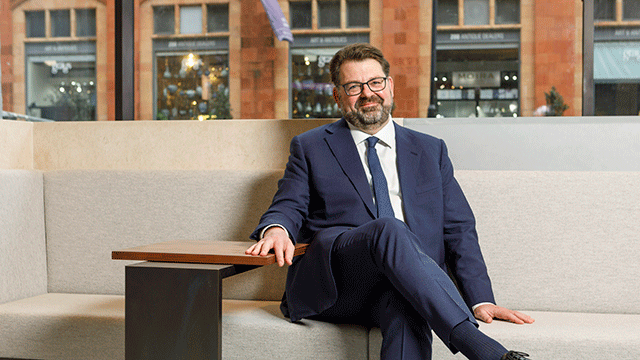Eco homes are now more likely to be marketed in terms of their cost savings and lifestyle accommodation than their green credentials, writes Elisabeth Jeffries
Eco-home campaigners have been wringing their hands. Due to be introduced in 2016, the Zero Carbon Standard was scrapped in England by the government in this summer’s productivity plan. It was to be the third in a series of progressive regulatory steps to minimise emissions from new build.
But to Peter Huf, architect of some of the homes that come closest to zero carbon emissions, labels do not matter. They do not sell his houses.
“The main reason why people love our concept is the lifestyle it reflects and the quality. The environmental aspects may come second,” he says. Admittedly, the customised homes sold by German company Huf Haus in the UK since the millennium are in a class of their own, positioned in the luxury “self-build” market. Standardised housing developments are not the company’s business model. Prices start at £400,000 plus the cost of a plot of land.
Nevertheless, his company’s narrative is typical of most of the market for greener homes. The Huf signature is post-and-beam, the structure the Tudors were so fond of. Triple-glazed window panels maximise light and solar gain while maximum fabric efficiency and a ground source heat pump slash greenhouse gas emissions. Solar PV crowns the company’s new show house in Weybridge, opened in July. “The customer feels close to nature,” says Huf.
But Huf Haus shares some of the values adopted by builders of larger developments such as Hill, A2 Dominion and Wessex Homes. All have been constructing overspecified houses certified to above level three in the now defunct Code for Sustainable Homes, the voluntary environmental rating. All emphasise quality of life and style more than energy or emissions performance.
That the Zero Carbon Standard has been abandoned comes as no great shock to Huf, given the company’s experience. “To build a draught-free house takes a lot of effort. It is easier said than done.” That and the bureaucracy required to gain the extra energy or sustainability certification is likely to put builders off. “I would say that a lot of developers may now say, ‘Let’s forget it.” That would definitely have an impact because they build most of the houses,” he says. Meanwhile, condensing gas boilers are still among the cheapest energy appliances and are becoming increasingly efficient.
In today’s economic climate, stringent green standards are out, and the pressure they create has deflated. Demand pull is the route selected by the government to drive down carbon emissions in the residential sector. A few carrots remain, such as the Renewable Heat Incentive, which has transformed the market for biomass boilers and ground source heat pumps.
Nevertheless, the CSH did have time to make some impression. Government figures indicate homes above minimum standards, defined by the Buildings Research Establishment as level three and above, are now to be found across different social classes. Around 194,000 of these have been built, of which 45% were in the private sector. Around 43,000 are at level four and above – the same as Huf Haus. This is only a small proportion of new build, though it excludes any house builders that did not use the code.
“It is in homes for people at all ends of the spectrum and age groups,” says Gwyn Roberts, new homes and communities team leader at BRE. Geographic differences have been emerging. If PV installations are used as an indicator, Cornwall, Wales, Bristol, the West Midlands, parts of Yorkshire and Scotland are the greenest, and London lags behind.
But with homes accounting for one-quarter of UK greenhouse gas emissions, that policy is unlikely to go very far to meet reductions targets. That is where the wealthy private housing sector will now need to play a greater role. According to Huf, a subtle shift is perceptible in the market that contrasts greatly with his home country Germany. There, many people buy or build their own home on their own plot and keep it.
As he points out, the priority of many buyers in the UK is value – how much the home is worth. They are more likely to consider the future sale of the home at the point of purchase. But for the first time, he sees environmental criteria filtering into their assessments. “More people are saying: ‘If I invest now in a very good, environmentally sound house, knowing the activity in the market overall is higher and more demanding, I can sell that house for a better price.’ That is why people are now saying: ‘Let’s invest in PV panels, a heat pump and so on.’”
Alternatively, he observes that they leave their options open if they can’t immediately afford the PV panels or other fittings. Huf says: “They decide they may want to add them on later. So they have this comfort that they already have a house where they can introduce them because the fabric efficiency of the house is already there.”
He suggests also that energy-saving concerns have begun to sink in. Regulations driven by climate change have caught up and toughened, so that buyers have become more sensitive to the issue. The lower bills paid by clients also act as a significant selling point.
But the natural surroundings and quality branding are the most important factors affecting their purchase, a consideration the private sector may need to emulate if greener homes are to sell. The Zero Carbon Standard makes no difference to players like Huf Haus, which remains optimistic. He says: “If we didn’t think the market was growing, we would not have opened our show house this summer.”
Home quality mark
Due to be launched by BRE in October, the Home Quality Mark is to replace the CSH. It consists of a one- to five-star rating and includes three indicators: costs, wellbeing and footprint. The aim is to attract people on quality of life considerations such as health and wellbeing rather than ever-decreasing greenhouse gas emissions or social and ecological concerns. “Lower carbon is being viewed as a more reliable investment,” says Gwyn Roberts of BRE. New mortgage rules taking household expenditure into account will also encourage the sale of homes consuming less energy.
“The government is keen for carbon- and cost-cutting to be led by the private sector, which will come out in a number of ways. Firstly, economic drivers like mortgages and secondly corporate social responsibility driven both by consumers and investors,” says Roberts. The Zero Carbon Standard, he suggests, was too narrow. “The Home Quality Mark is much broader. The Zero Carbon Standard was very focused on one issue, which could have created unintended consequences such as buildings not performing as they were designed to and ventilation, air quality or overheating issues.”











